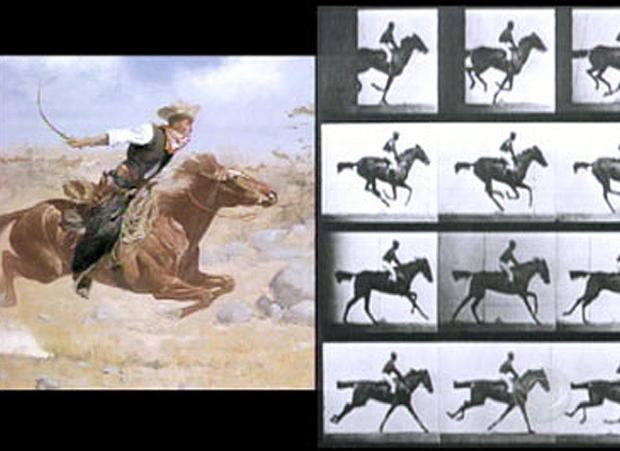Early film's influence on art
You may have seen a famous 1907 George Bellows painting called "Club Night." But you may not be familiar with the film on boxing by the Edison Manufacturing company, which was made 13 years earlier.
Nancy Matthews, senior curator of the Williams College Museum of Art, believes that films like this influenced Bellows' whole view of boxing.
"You know, the black background, you have this same viewpoint, like your nose is right at the floor of the boxing ring," she told Sunday Morning correspondent Rita Braver.
And it's not just Bellows and boxing. In 1915 John Sloan painted "Sun and Wind on the Roof," which looks like it was influenced by the 1904 film "Windy Day on the Roof."
"Storm at Sea" was made in 1900, and the same year George Luks painted "In the Steerage."
"There's a certain 'wow' factor," Matthews said. "And I knew from my own experience seeing it for the first time, it was extraordinary."
Matthews spent 10 years assembling the paintings and films for "Moving Pictures" — the first exhibit ever to focus on American art and early film, Centered on works created between 1880 and 1910 it's now on display at the Phillips Collection in Washington.
"What I'm trying to say in this exhibition is that we have underestimated the relationship between film and the art of its day," she said.
Matthews first started thinking about how artists and film makers might have influenced each other when she was studying the life of artist Maurice Prendergast, born in 1858 and discovered that he'd owned stock in a film company.
"Well, it wasn't until I saw pictures in my research about early film that looked so much like his work and the other artists of the day that I began to see a real project here," she said.
Matthews found that Prendergast's 1900 painting of a merry-go-round is remarkably similar to a film of a merry-Go-round made in 1898. This film of water breaking on rocks is akin to a whole series of Prendergast surf paintings. Matthews says the similarities really begin to make sense when you realize that artists of the time and early film makers were concerned with the very same things:
"And so what results is the real foment, the real sort of melting pot of ideas that goes on between the two media," she said.
In fact, the very first films did not try to tell complex stories; they were more like paintings that moved. In one poster advertising one of Thomas Edison's early film projection techniques the screen even has a frame around it.
"That is exactly what this exhibition is about — moving pictures," Matthews said. "That the image that was on that screen was not seen as theater, was not even seen as technology, but it was seen as art and art with a capital 'A.'"
Even the famous Edison Film "The Kiss" made in 1896 bears a striking resemblance to a lithograph of a scene from the play "Carmen."
"This was probably the most popular film made probably in that decade because of the subject matter, because it's a kiss — and because it's a weird kiss," she said.
Sometimes the films evoked sculpture rather than painting. Eugene Sandow was a well-known body builder in the 1890s.
"He actually performed this on stage with marble dust, white powder on him in imitation of sculpture," she said.
Early films and still photographs actually helped artists analyze how both humans and animals looked in motion. A series of still shots photographed and animated by Eadweard Muybridge was commissioned by railroad tycoon Leland Stanford to help him figure out how to choose good racing horses:
"Muybridge then began attacking all of the horse painters who had ever lived, saying, OK, you've gotten it all wrong, this is not the pose of legs in this particular trot or this gallop, and you have imposed your own imperfect human eye on something that the camera can see much better," she said.
Matthews said that photographers and painters often work on the same subjects and they influenced each other.
"I think it's a seesaw, sometimes the filmmakers like at the very beginning obviously the film makers are referring to the still images they know," she said. "Artists immediately jumped into it, and their paintings began to change because of the moving images they saw."
But by 1903, a film of a new kind, called "The Great Train Robbery," established storytelling as the central feature of American films.
"And ever after that, it's really plot and character that have driven movies — the union of the two that we see in this very early period is no longer front and center," Matthews said.
Still, she says she has not gotten over the thrill of discovering that moment in time when American artists and film makers were looking at the same things in the same ways.
"It's not a huge part of history," she said, "but it's an important part of history."
